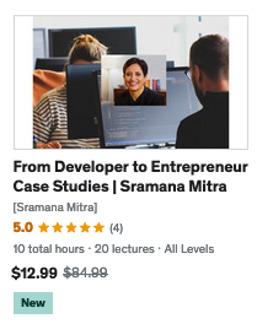Cloud Stocks: Palo Alto Network’s Transformation Strategy Delivers Results

According to a recent report by Fortune Business Insights, the global cyber security market is projected to grow at 13% CAGR to reach $376.32 billion by 2029 driven by significant adoption of AI and ML capabilities. Security player Palo Alto Networks (NYSE:PANW) is counting on its ability to continue to transform and innovate to expand its market share in the industry.
>>>Featured Videos
Building a Global Hardcore Financial Technology Company from Brazil: Ricardo Josua, CEO of Pismo (Part 3)
Sramana Mitra: Pinpoint for me exactly what problem you are solving now.
Ricardo Josua: We are solving agility with robustness for core banking capabilities. What banks have done for the past 10 years is take an agile team or a group of young developers and build experiences that are very cool but have to integrate with old legacy infrastructure. In 99% of the cases, that’s a major bottleneck. What we were providing is the backbone to match the chops of their customer experience needs. We have agile, microservices-oriented solutions for banking infrastructure.
>>>From Developer to Serial Entrepreneur: Michael Morris, CEO of Torc (Part 3)
Sramana Mitra: Is it all word-of-mouth that developers found out about you?
Michael Morris: Word-of-mouth. I referenced that Social Network movie because it mostly started in Computer Science departments at universities across the globe. Once we got a foothold in the US, it started going globally. Once we went global, it expanded. There was a point in time when we were adding about 50,000 people per quarter to the community. It was hugely viral growth. We did a great job of celebrating the top talent. That helped.
Sramana Mitra: That was helping their careers.
>>>Video FAQs
Can 1M/1M Help Me Raise Money?
How Does 1M/1M Democratize Entrepreneurship Education?
How Does 1M/1M Democratize Management Consulting?
When Is The Right Time To Join 1M/1M?
Can 1M/1M Help Me With Business Development?
Can 1M/1M Help Me With Market Sizing?
Can 1M/1M Help Me Validate My Product?
Will I Have Private 1-on-1 Sessions In 1M/1M?
How Does 1M/1M Help Entrepreneurs Connect With Silicon Valley?
Mentoring or Consulting?
Why Does 1M/1M Charge $1000 a Year?
Why Does 1M/1M Partner With Local Organizations?
Why Don\’t Mentoring Networks Work?
Why Is It Important To Study With 1M/1M Now?
Dan Stewart Story
Vikrant Mathur Story
Cloud Stocks: ON24 Targets $44 Billion Addressable Market

According to a recent report, the global digital experience platform market is expected to grow at 12% CAGR from $10.11 billion in 2021 to reach $25.03 billion by 2029. San Francisco-based ON24 (NYSE: ONTF) continues to expand its footprint in the market through its product upgrades.
>>>New 1Mby1M – Udemy Course and Discount Coupon: From Developer to Entrepreneur Case Studies

1Mby1M has had particular success in helping techie entrepreneurs learn the nuances of technology entrepreneurship and making the transition to successful entrepreneurs by learning the business side of startups.
In this new course, From Developer to Entrepreneur Case Studies, we offer case studies of entrepreneurs who have made this transition successfully, in their own words.
Through these case studies, developers who are aspiring entrepreneurs can learn what the journey entails.
Click on the image below to enroll for $12.99 today!

TRY1MBY1MSEP2022D2E
Building a Global Hardcore Financial Technology Company from Brazil: Ricardo Josua, CEO of Pismo (Part 2)
Sramana Mitra: Now we’re in 2012?
Ricardo Josua: 2014. I started another venture in finance providing structuring for asset-backed security. It was lateral to the business we were doing at that point. I also began working with EdTech on modernization for schools.
Sramana Mitra: In what capacity were you involved in these ventures?
>>>From Developer to Serial Entrepreneur: Michael Morris, CEO of Torc (Part 2)
Sramana Mitra: What year does this bring us up to?
Michael Morris: This would be the end of 2001. A group of us stayed on for a little bit, then we left. We went and started a company called Topcoder. The whole idea was to build a community for software developers to compete and earn a profile, and do what you used to do in universities where you had grades. Oftentimes, you had competitions. We started doing those things with Topcoder. We got to about 10,000 people. We just saw it spread and grow. We grew that community. Fast forward to 2008, we probably had about 250,000 software developers in the community.
>>>Decacorns: Analysis of Gusto’s Acquisitions

According to a recent report, the global cloud-based payroll software market is estimated to grow at 6% CAGR from $11.6 billion in 2021 to reach over $16.8 billion by 2027. San Francisco-based Gusto recently entered the Decacorn club in this space.
>>>